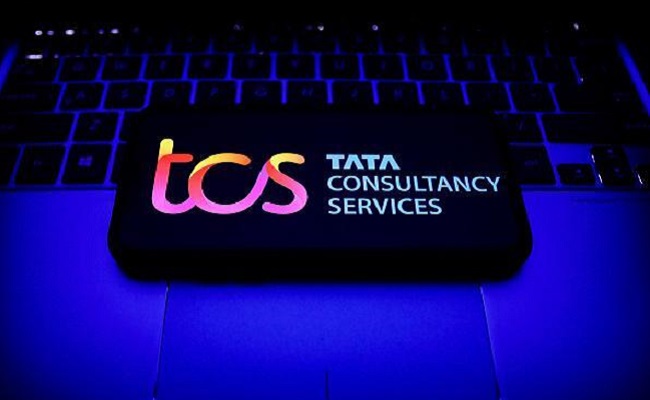全部新闻

AI淘金热:TCS着眼$1.5B,瞄准第一名
2025-12-17 18:09:12
印度最大的 IT 服务公司塔塔咨询服务有限公司披露了一项雄心勃勃的计划,旨在成为“全球最大的人工智能主导的技术服务公司”。首席执行官 K Krithivasan 宣布,TCS 的人工智能年收入已达 15 亿美元,前 60 家客户中有 54 家使用其人工智能服务。该公司旨在利用其客户关系和战略投资,在五个关键支柱上实现这一愿景:内部转型、服务重新定义、面向未来的人才模型、客户价值链重新构想和生态系统扩展。TCS 还在人工智能领域采用全栈方法,从芯片设计到人工智能代理部署,并对其面向客户的团队进行了 100% 的培训,并提高了超过 180,000 名员工的高阶人工智能能力。最近的进展包括成立 HyperVault AI Data Center Ltd.,以及与 TPG 就价值 1800 亿卢比的数据中心业务建立合作伙伴关系。
印度最大的 IT 服务公司塔塔咨询服务有限公司披露了一项雄心勃勃的计划,旨在成为“全球最大的人工智能主导的技术服务公司”。首席执行官 K Krithivasan 宣布,TCS 的人工智能年收入已达 15 亿美元,前 60 家客户中有 54 家使用其人工智能服务。该公司旨在利用其客户关系和战略投资,在五个关键支柱上实现这一愿景:内部转型、服务重新定义、面向未来的人才模型、客户价值链重新构想和生态系统扩展。TCS 还在人工智能领域采用全栈方法,从芯片设计到人工智能代理部署,并对其面向客户的团队进行了 100% 的培训,并提高了超过 180,000 名员工的高阶人工智能能力。最近的进展包括成立 HyperVault AI Data Center Ltd.,以及与 TPG 就价值 1800 亿卢比的数据中心业务建立合作伙伴关系。

亚马逊表示 AI 首席执行官罗希特·普拉萨德 (Rohit Prasad) 将离职,彼得·德桑蒂斯 (Peter DeSantis) 将领导“AGI”团队
2025-12-17 17:52:45
亚马逊周三证实,Alexa 高级副总裁兼首席科学家 Rohit Prasad 将于今年年底离开公司。为了应对 AI 部门内部的组织变革,亚马逊首席执行官安迪·贾西 (Andy Jassy) 宣布将通用人工智能 (AGI) 部门重组为一个更大的部门,纳入芯片开发和量子计算团队,由拥有 27 年经验的资深人士彼得·德桑蒂斯 (Peter DeSantis) 领导。此次重组旨在消除业界对亚马逊在人工智能产品开发方面落后于竞争对手的看法。Prasad 因其在离职前对 Alexa 和 AGI 计划的重大贡献而受到认可。
亚马逊周三证实,Alexa 高级副总裁兼首席科学家 Rohit Prasad 将于今年年底离开公司。为了应对 AI 部门内部的组织变革,亚马逊首席执行官安迪·贾西 (Andy Jassy) 宣布将通用人工智能 (AGI) 部门重组为一个更大的部门,纳入芯片开发和量子计算团队,由拥有 27 年经验的资深人士彼得·德桑蒂斯 (Peter DeSantis) 领导。此次重组旨在消除业界对亚马逊在人工智能产品开发方面落后于竞争对手的看法。Prasad 因其在离职前对 Alexa 和 AGI 计划的重大贡献而受到认可。

客户挑战
2025-12-17 16:59:15
站点组件故障;潜在原因包括浏览器扩展、网络问题或浏览器设置。检查互联网连接、禁用广告拦截器或切换浏览器。
站点组件故障;潜在原因包括浏览器扩展、网络问题或浏览器设置。检查互联网连接、禁用广告拦截器或切换浏览器。

客户挑战
2025-12-17 16:56:45
站点组件加载失败,可能是由于浏览器扩展、网络问题或浏览器设置造成的。检查互联网连接、禁用广告拦截器或使用其他浏览器。
站点组件加载失败,可能是由于浏览器扩展、网络问题或浏览器设置造成的。检查互联网连接、禁用广告拦截器或使用其他浏览器。

美光的成败时刻:AI 炒作能否证明 176% 的飙升是合理的?
2025-12-17 16:31:10
由于对人工智能贸易增长的怀疑,美光科技(纳斯达克股票代码:MU)将公布高预期的收益报告。到 2025 年,股价已飙升 176%,但最近的下跌表明在报告发布之前需要重新评估。市场关注的是人工智能数据中心支出的增长势头是否会继续加速。估值仍然是一个关键问题;与同行的较高市盈率相比,美光科技的市盈率约为预期市盈率的 11 倍。高涨的预期和周期性的内存需求使得即将到来的收益对于确定美光的估值合理性至关重要。
由于对人工智能贸易增长的怀疑,美光科技(纳斯达克股票代码:MU)将公布高预期的收益报告。到 2025 年,股价已飙升 176%,但最近的下跌表明在报告发布之前需要重新评估。市场关注的是人工智能数据中心支出的增长势头是否会继续加速。估值仍然是一个关键问题;与同行的较高市盈率相比,美光科技的市盈率约为预期市盈率的 11 倍。高涨的预期和周期性的内存需求使得即将到来的收益对于确定美光的估值合理性至关重要。

使用 Gemini 3 Flash 进行构建,前沿智能可随您扩展
2025-12-17 16:10:50
谷歌发布了 Gemini 3 Flash,这是一款经济高效、功能强大的 AI 模型,其性能优于 Gemini 2.5 Pro 等之前版本,而成本不到四分之一。它在编码、游戏、深度伪造检测和文档分析方面表现出色。Gemini 3 Flash 可通过 Google AI Studio、Antigravity、CLI、Android Studio 和 Vertex AI 使用,提供先进的视觉和空间推理功能以及上下文缓存,从而降低成本。早期采用者对其在各种应用程序中的速度和性能充满热情。
谷歌发布了 Gemini 3 Flash,这是一款经济高效、功能强大的 AI 模型,其性能优于 Gemini 2.5 Pro 等之前版本,而成本不到四分之一。它在编码、游戏、深度伪造检测和文档分析方面表现出色。Gemini 3 Flash 可通过 Google AI Studio、Antigravity、CLI、Android Studio 和 Vertex AI 使用,提供先进的视觉和空间推理功能以及上下文缓存,从而降低成本。早期采用者对其在各种应用程序中的速度和性能充满热情。

Gemini 3 Flash:为速度而生的前沿智能
2025-12-17 16:03:23
谷歌发布了Gemini 3 Flash,这是一种新的人工智能模型,旨在以比以前版本更低的成本提高速度和效率。它可以通过各种 Google 平台使用,包括 Gemini 应用程序、搜索中的 AI 模式以及 Gemini API 和 CLI 等开发人员工具。Gemini 3 Flash 提供适用于交互式应用程序中的编码、复杂分析和快速响应的高级推理功能,同时在 GPQA Diamond 和 Humanity’s Last Exam 等基准测试中保持最先进的性能。它现在是开发人员和普通用户的全球默认模型,增强了多模式理解和代理工作流程等功能。
谷歌发布了Gemini 3 Flash,这是一种新的人工智能模型,旨在以比以前版本更低的成本提高速度和效率。它可以通过各种 Google 平台使用,包括 Gemini 应用程序、搜索中的 AI 模式以及 Gemini API 和 CLI 等开发人员工具。Gemini 3 Flash 提供适用于交互式应用程序中的编码、复杂分析和快速响应的高级推理功能,同时在 GPQA Diamond 和 Humanity’s Last Exam 等基准测试中保持最先进的性能。它现在是开发人员和普通用户的全球默认模型,增强了多模式理解和代理工作流程等功能。

Sreeleela 反对针对女演员的人工智能滥用
2025-12-17 15:59:12
女演员 Rashmika Mandanna、Keerthy Suresh、Janhvi Kapoor 和 Sreeleela 对人工智能生成图像的滥用表示担忧,尤其是那些针对电影行业女性的图像。这些女演员强调了对她们的图像进行粗俗和未经授权的数字修改,敦促社交媒体用户不要支持此类内容。Sreeleela 强调,技术的进步应该简化生活而不是使其复杂化,并强调尊重所有担任各种角色的女性的重要性。
女演员 Rashmika Mandanna、Keerthy Suresh、Janhvi Kapoor 和 Sreeleela 对人工智能生成图像的滥用表示担忧,尤其是那些针对电影行业女性的图像。这些女演员强调了对她们的图像进行粗俗和未经授权的数字修改,敦促社交媒体用户不要支持此类内容。Sreeleela 强调,技术的进步应该简化生活而不是使其复杂化,并强调尊重所有担任各种角色的女性的重要性。

拥有 800 万用户的浏览器扩展程序收集扩展的 AI 对话
2025-12-17 15:25:25
安全公司 Koi 发现,包括 Urban VPN Proxy 和 1ClickVPN Proxy 在内的多种浏览器扩展可以从 ChatGPT、Claude 和 Gemini 等平台收集 AI 对话数据。收集的数据包括每个用户提示、响应、会话元数据以及所使用的特定人工智能平台。即使其他功能被禁用,这些扩展程序也会继续收集数据,除非扩展程序本身被删除。Koi 在 Chrome Web Store 和 Edge Add-ons 中的 8 个扩展程序中发现了这种行为,总共安装了超过 800 万次。据称,收集到的数据被出售用于营销分析目的,引发了隐私问题。
安全公司 Koi 发现,包括 Urban VPN Proxy 和 1ClickVPN Proxy 在内的多种浏览器扩展可以从 ChatGPT、Claude 和 Gemini 等平台收集 AI 对话数据。收集的数据包括每个用户提示、响应、会话元数据以及所使用的特定人工智能平台。即使其他功能被禁用,这些扩展程序也会继续收集数据,除非扩展程序本身被删除。Koi 在 Chrome Web Store 和 Edge Add-ons 中的 8 个扩展程序中发现了这种行为,总共安装了超过 800 万次。据称,收集到的数据被出售用于营销分析目的,引发了隐私问题。

幽灵工作、机器人看门人和人工智能面试官:让我告诉你暗淡的求职新时代 |埃莉诺·马戈利斯
2025-12-17 15:18:00
在误导性的就业市场中,求职者面临着越来越多的挑战,许多广告中的职位可能并不存在。申请人很难理解模糊的职位描述,遇到有利于某些候选人的人工智能驱动的应用程序过滤器,并处理非人类面试过程。这种机械化的招聘系统对经验丰富的专业人士和应届毕业生的影响不成比例,导致求职者感到高度沮丧和怀疑。一个
在误导性的就业市场中,求职者面临着越来越多的挑战,许多广告中的职位可能并不存在。申请人很难理解模糊的职位描述,遇到有利于某些候选人的人工智能驱动的应用程序过滤器,并处理非人类面试过程。这种机械化的招聘系统对经验丰富的专业人士和应届毕业生的影响不成比例,导致求职者感到高度沮丧和怀疑。一个